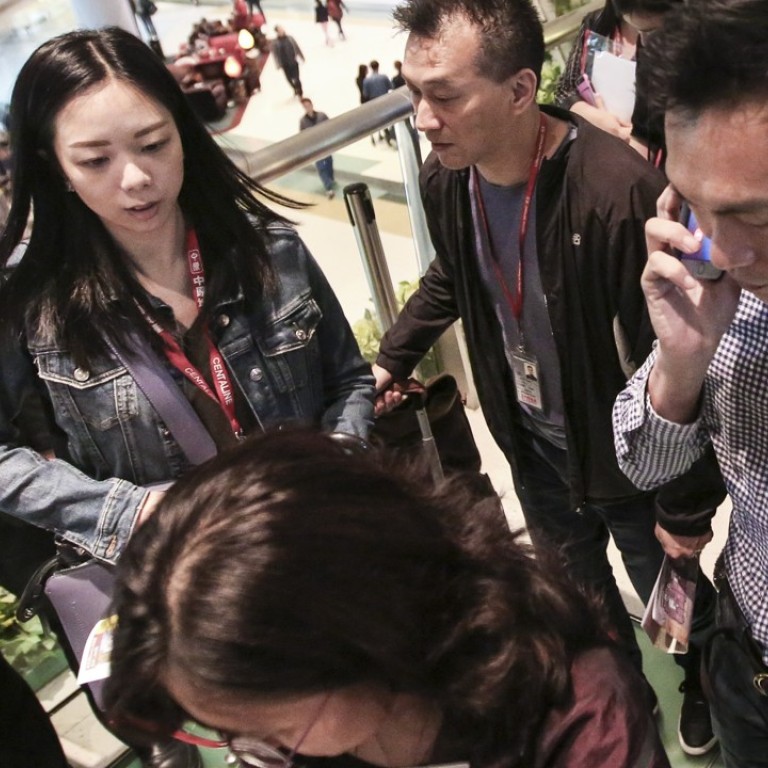
How high can it go? Hong Kong home prices defy government curbs and continue to soar
Colliers data shows overall home prices gained 1.6 per cent in the first quarter
Government curbs have again failed to apply the brakes on Hong Kong’s runaway property market, figures released by Colliers International for the first quarter show. Virtually all the research and prognosis for the remainder of this year forecast prices to continue their upward trend.
Transaction volumes of private home sales dropped by almost one-third as the 15 per cent stamp duty on residential purchases kicked in – but prices continued their upward surge.
The report found that strong demand from domestic users and investors from mainland China bolstered all sectors of the property market. It says an improved economic outlook and global trade recovery will support this trend.
Colliers data shows that overall home prices gained 1.6 per cent in the quarter, marking the 11th consecutive month of growth. Market appetite remains strong due to low interest rates and an active land sale market.

The new-home sector fared particularly well, with developers offering discounts of up to 15 per cent to offset the additional stamp duty. “They could still maintain project margins by pushing up stated prices before buying incentives,” says senior analyst Zac Tang, adding that this strategy helped boost market sentiment, resulting in further price growth.
Investment demand remained strong, as evidenced by an increasing number of first-time buyers who, until the closing of a loophole effective from April 12, were exempt from paying the stamp duty when acquiring multiple units in one transaction.
Various record sales on The Peak show that the ultraluxury segment has again proved resistant to headwinds. For example, the Colliers report cited a mainland investor’s acquisition of a Mount Nicholson house in February for HK$720 million or HK$89,032 per square foot.
Leasing activity also picked up in February and March after a subdued January.

Daniel Shih, Colliers’ research director, notes that despite improved global business sentiment, multinational companies have kept their housing allowances low, causing a shift in leasing demand away from the top-end segment – in excess of HK$100,000 a month – to more affordable – HK$40,000 to HK$80,000 – options.
Colliers found that landlords “did not see the need to offer discounts amid low vacancies, while some landlords actually raised their asking rents”. Flats with monthly rents of HK$20,000 to HK$50,000 have been the most active as they are popular among domestic and expatriate occupants.
Colliers notes that capital outflow controls in mainland China have not kept developers away from Hong Kong property.
“HNA Group acquired two more sites in Kai Tak for HK$13.0 billion,” Shih says. Logan Property and KWG jointly acquired the residential site of the former Hong Kong School of Motoring in Ap Lei Chau with a record bid of HK$16.8 billion , or HK$22,118 per square foot, while Ping An Real Estate lined up with Road King Infrastructure and outbid 13 others for the 576,950 sq ft by GFA residential development atop the Wong Chuk Hang MTR station.”
Colliers expects end-user demand for property to stay strong in the second quarter and beyond. The firm forecasts price growth of 3 to 8 per cent in 2017.
JLL agrees that the new stamp-duty regime effective since April is unlikely to have a significant impact on market dynamics.
“Investors still looking for opportunities could shift their focus to acquiring a one-off property, requiring a larger lump sum payment, instead of buying multiple units in one go,” says Henry Mok, regional director of capital markets at JLL. “This could potentially push up prices in the luxury market.”
Mok adds that since no more than 5 per cent of property transactions have been affected by the change, it would be unlikely to affect future transaction volumes. It may give first-time buyers a better chance of landing their desired property “though competition remains fierce against new launches being oversubscribed and a lack of availability in the secondary market”.
Ingrid Cheh, senior manager of research at JLL, expects transaction volumes for the full year to exceed the 54,700 sales recorded in 2016. “Unless there are drastic changes to the financing environment or other external shocks, we should continue to see mass residential prices flying higher, in the range of 10 to 15 per cent in 2017, an upgrade from our previous forecast,” she says.
Knight Frank says the 11.2 per cent gain in house prices recorded by the firm’s research from the second quarter to the fourth quarter in 2016 shows Hong Kong to have the strongest growth of the regional markets tracked.
“Rebalancing the dynamics in the property market and providing affordable housing for the low and middle classes will be vital for Hong Kong’s newly-elected chief executive,” it notes.

